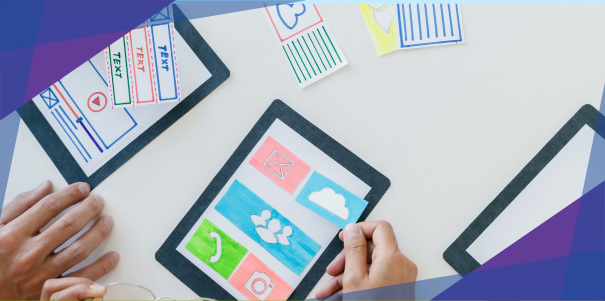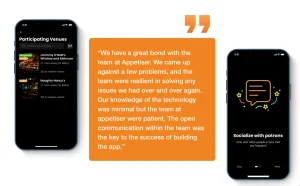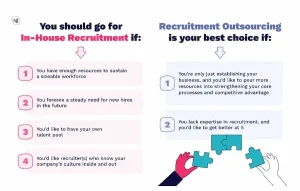How to Hire a UX Designer That Best Suits Your Needs

The face of the user experience (UX) designer has changed with the times.
The combination of digital transformation and the ballooning of e-commerce has turned the world into a single market, tightening competition for customers. To grab people’s attention or sell products, the UX designer must go beyond crafting visually appealing and user-friendly websites and mobile apps.
A new age requires a new type of UX designer. And this article will help you find just that.
Read on to learn about the evolution of the UX designer role, align your business needs with the right kind of UX professional, and implement effective hiring strategies to get the best fit for the job.
Without further ado, let’s begin!
Looking outward: The changing face of the UX designer
Our UX designers at Appetiser Apps have honed their skills in Silicon Valley and other top tech environments. Navigating the external landscape of technology and the world of business, they have developed crucial competencies in the following areas:
- Product development
- Collaboration
- AI integration
Product development
UX/UI designers have evolved from focusing mostly on visuals to playing a crucial role in strategic decision-making and product development. They now have to deal with understanding business strategies, market needs, and user behavior.
The more familiar UX designers are with usability testing, market research, competitor analysis, and other product management principles, the more easily they can understand your business goals and translate them into a user interface that satisfies your target users. This tight alignment between business strategy and UX design can save you a great deal of time and resources.
Collaboration
A deeper involvement in product development requires collaborative skills.
UX designers now work closely with product managers, ensuring that the design process aligns with product goals. This partnership is integral, with each role bringing distinct expertise to achieve cohesive product development.
UX designers with excellent collaborative skills can help shorten project timelines and produce more innovative products.
In fact, collaboration has inspired even founders with no technical skills to create unique solutions in the tech space. Case in point: MUCUDU.
MUCUDU founders James Gallagher and Zenita O’Neill are exceptional entrepreneurs. However, they have zero knowledge of programming languages. Despite this, they created a unique social app that connects bar owners with their patrons.
James’ and Zenita’s digital brainchild is the fruit of collaborating with the right team that had the technical and app business know-how to realize their vision.
Discover how collaboration breeds well-designed digital products by reading the MUCUDU case study.


AI integration
Artificial intelligence (AI) is revolutionizing design workflows by automating repetitive tasks, analyzing large datasets, and enabling efficient prototyping.
UX designers worth hiring are those who know how to interpret data. In other words, they can use AI insights to inform business decisions and improve user experiences.
Designers today must continuously learn about data literacy, algorithmic thinking, and AI technologies. Prioritize hiring a UX designer with a growth mindset for your design team.
Source: TED Institute on YouTube
You’ve seen how the panorama of the UX design landscape has changed. Now, it’s time to introspect and examine your business so you can hire UX designers effectively.
Looking inward: Matching your needs with the right UX design professional
When considering how to hire a UX designer, it’s crucial to clearly identify the role and responsibilities you need them to fulfill. What specific action items does your UX designer have to accomplish?
Understanding the specific requirements of the job will help you identify the right type of UX professional to hire, as there are four distinct categories of UX experts:
- UI designer
- Senior UX designer
- Junior UX designer
- UX developer
The table below will give you an idea of what jobs best match each type of UX designer:
| Designation | Jobs / Tasks |
|---|---|
| UI Designer | Focuses on visual interfaces like a graphic designer Creates animations and interactive design assets |
| Senior UX Designer | Outlines design processes based on market research Defines core design structures Maintains consistent user experience across apps |
| Junior UX Designer | Implements core design structures |
| UX Developer | Codes interface design elements for user-friendliness |
Now that you know what the ideal UX designer is capable of, it’s time to learn how to hire them.
Looking people up: The latest hiring strategies for the UX design role
Hiring skilled UX designers who can catch up with the latest business developments requires knowledge of three things:
- Choosing the right hiring model
- Writing a job description
- Interviewing the candidate
Choosing the right hiring model
There is no universal strategy for hiring a UX designer. Your choice should be based on your project needs, budget, and preferences.
Fortunately, the increase in Internet penetration and the spread of remote work arrangements have expanded the diversity of hiring arrangements for UX designers. You now have plenty of options to consider that best match your particular situation. These options include:
- In-house hiring
- Hiring freelancers
- Augmenting your staff through outsourcing agencies
In-house hiring
In-house hiring is ideal if you want to build a core team and culture with full-time employees who can deeply understand your product and business needs.
This arrangement is also optimal if your company has a stable workflow that requires continuous design work.
Job boards like Glassdoor and LinkedIn are useful for finding in-house UX designers. These online recruitment platforms collectively give you access to industry groups and precise search tools to help you find the best fit for your design team.
You may also join UX design conferences to connect with potential candidates and learn about their skills firsthand. Many conferences include portfolio reviews or presentations where designers showcase their work. This gives hiring managers a chance to see practical examples of a candidate’s abilities and creativity.
Hiring freelancers
Freelance UX designers are ideal if you have short-term projects or running a small business.
However, the typical freelance UX designer requires more management as they may communicate less and share fewer insights with different teams. Therefore, it’s crucial to set clear expectations, goals, and detailed project descriptions when working with freelancers.
Platforms like Upwork or Toptal can be useful for hiring and managing payments for freelance UX designers.
Augmenting your staff through outsourcing agencies
Outsourcing is a relatively new arrangement you can consider.
If you land a deal with the right outsourcing agency, you can enjoy the upsides of freelancing and in-house hiring.
Outsourcing helps reduce operational costs by eliminating expenses associated with employer benefits, training, and onboarding processes. Outsourcing companies also offer more organized communication.
You can collaborate with design agencies in various ways, such as having them build a dedicated team for you or augmenting your internal staff. Some even offer flexible graphic design subscription models, making it easier to scale your creative output without the hassle of hiring full-time.
But we at Appetiser Apps happen to do both. Save your time and effort looking for the right agency by booking a free consultation with us.

Source: MagicHire
Writing a job description
A well-written job description can spell the difference between attracting top-tier UX designers and getting stuck with substandard ones.
Job descriptions are usually important when you’re hiring freelancers or in-house.
Here are the crucial elements that will ensure your job description will cover all the necessary details without being too overloaded with information:
- Job title. Be precise. Mention what type of UX designer you are hiring. As I mentioned earlier, a UX designer is not the same as a graphic designer, UI designer, product designer, or front-end developer.
- Project overview. Provide a concise description of the project. Explain what you’re creating or improving with UX tools and techniques. Don’t forget to outline your execution strategy.
- Responsibilities. Specify the candidate’s duties and who they will collaborate with. This helps your prospective UX designer understand their role within the team.
- Requirements. List the essential knowledge, experience, and skills needed. Since UX design is a relatively new field, you don’t have to be too strict with traditional education requirements.
- Offerings. Highlight benefits such as schedule flexibility, office accommodations, team-building activities, and any other perks.
- Salary range. Be transparent about how much you are going to pay your future UX designer. This will attract candidates who are aligned with your budget while saving time in the hiring process.
Interviewing the candidate
Just like job descriptions, interviews are usually important when you’re hiring freelancers or in-house. However, you may also opt to interview UX designers from outsourcing agencies if these companies allow it. Some companies even use an applicant tracking system to manage technical hiring to make sure they find the best candidate for a specific position.
Before interviewing a candidate, review the UX designer’s portfolio to gauge their problem-solving skills and ability to craft efficient user journeys. A robust portfolio should display the designer’s thought process for each project. If the portfolio lacks clarity, address these gaps during the interview.
While interviewing a candidate, ensure that they can communicate effectively and listen actively. These are crucial for team collaboration and aligning with product goals and customer needs.
Some technical questions you can ask to assess your candidate are:
- What was the last design problem you solved, and what was your approach?
- What role do you excel in on projects and why?
- How would your previous manager evaluate your work?
- Which portfolio projects best highlight your strengths and why?
- Describe a challenging design problem you’ve faced and how you overcame it.
- Based on our project brief, do you need additional time for any specific areas?
- Are there any projects or tasks you prefer not to work on?
- What are your favorite examples of good user experience?
- How do you choose your user research methods?
- How do you stay current with industry trends and techniques?
- How would you conduct user research for our future market?
In addition to work-related questions, asking more general ones can help assess the candidate’s cultural and mindset suitability to your team. You may incorporate the following questions in your interview sheet:
- Tell us about yourself and your background. What excites you about this field?
- Describe any memorable life experience. How does this experience help you empathize with users and map customer experiences?
- How do you handle frustrations and failures in general?
- How do you deal with conflict and criticism?
As you may already know, a great UX designer works best with a highly competent app developer. We also have information on how you can conduct an interview to get developers that complement your UX design team. To learn more, check out our article listing the crucial questions you should ask developers before hiring them.
People also ask about hiring UX designers and other tips
Choosing the right UX designer can be overwhelming if you’re unsure what sets them apart from other design specialists. To help you make a confident decision, let’s break down some of the most common questions we hear from clients and share what really matters when hiring for your next app or project.
1. What exactly does a UX designer do, and how is it different from UI or graphic design?
At Appetiser Apps, when we talk about UX designers, we’re really talking about the professionals who get into the mind of your user and make sure that the entire experience feels seamless and natural.
While a UI designer might be absorbed in picking the right shade of blue for a button or finding the best font for your headline, a UX designer obsesses over how someone actually moves through your product: where they might get stuck, what makes them smile, and how to keep obstacles out of their way.
Graphic design? That’s a whole other world, focused more on branding, visuals, and creative illustrations. The difference with us: we treat UX as the foundation for everything. Our goal is to make every app feel intuitive from the moment your user opens it, so real needs guide design choices; not just visual trends.
2. How should I evaluate a UX designer’s portfolio? Is visual style or process/problem-solving more important?
Looking at a UX portfolio should feel like following a behind-the-scenes documentary. Sure, polished visuals stand out, but what really matters is the story behind them.
We encourage clients to ask:
- What problem did this designer face?
- How did they uncover what real users wanted, and what steps did they take to solve it?
Process and problem-solving always outweigh raw aesthetics. Anyone can copy a pretty trend, but only a skilled UX designer can dig into research, sift through feedback, and iterate until everything just “clicks.”
3. What kind of questions should I ask a UX designer during an interview?
If you want to bring the best out of a UX designer, go deeper than surface-level questions. Ask about a truly challenging project and how they pushed through unexpected issues. Find out how they handle negative feedback or if they’ve ever changed course after talking to actual users.
Push for a walkthrough of their usual process, from blank page to launch, and see if they naturally factor in accessibility and inclusivity along the way.
4. What are the most common mistakes to avoid when hiring a UX designer?
One of the biggest mistakes we see is choosing a UX designer based solely on a flashy portfolio, without digging into whether those designs actually solved user or business challenges.
Skipping a proper conversation about operational and business goals is another trap. If a designer doesn’t “get” what you’re trying to accomplish, you’ll never get what you really need.
Finally, underestimating cultural or attitude fit is a recipe for communication headaches. At Appetiser Apps, we always start by getting ultra clear on your vision and values, so our app designers come in ready to co-create, not just decorate.
5. Should I hire a freelancer, in-house staff, or a design agency for UX? What factors matter?
Your choice really hinges on what your product needs and where you want to go. Freelancers can be a good fit if you’re after something quick and focused, but might leave you short when your app evolves or you need reliable, ongoing support.
Going in-house is great for continuity, but there’s a learning curve and overhead.
With an app development agency like Appetiser Apps, you get a full bench of specialists, fast-turnaround collaboration, and knowledge built from hundreds of launches; we mesh our expertise with your ambition, whether you’re just starting out or scaling up fast.
Which skills and experience should a UX designer have?
For us, a top-notch UX designer doesn’t just sketch wireframes. They get their hands dirty with real user research, ideation workshops, detailed prototyping, and hard-hitting usability tests.
They know how to build rich personas but can also simplify flows so your grandma could find her way. Most importantly, they can explain and back up their design choices, and they’re hungry to learn from every new challenge.
That’s why every Appetiser Apps designer brings not just creative skills, but a curiosity and openness that turns feedback into fantastic products.
Simplify how you hire a UX designer
When devising strategies on how to hire a UX designer, it’s important to be aware of the latest trends in business and technology. Any change in either area will likely affect the roles and ways of working of UX professionals.
But keeping up with the latest trends can be challenging, especially if you have a lot on your plate.
Fortunately, our high-performing UX designers at Appetiser Apps can help save you time and effort.
No more qualms or emotional baggage when hiring or firing the right UX designer or app developer. You are not locked in for a fixed period. You have leeway to decide when to use or stop leveraging our app design and development services and expertise.
Your time and resources matter. Use them wisely. Explore cost-effective pathways to progress. Schedule a free consultation with us.

Jesus Carmelo Arguelles, aka Mel, is a Content Marketing Specialist by profession. Though he holds a bachelor’s degree in business administration, he also took courses in fields like computer troubleshooting and data analytics. He also has a wealth of experience in content writing, marketing, education, and customer support.


